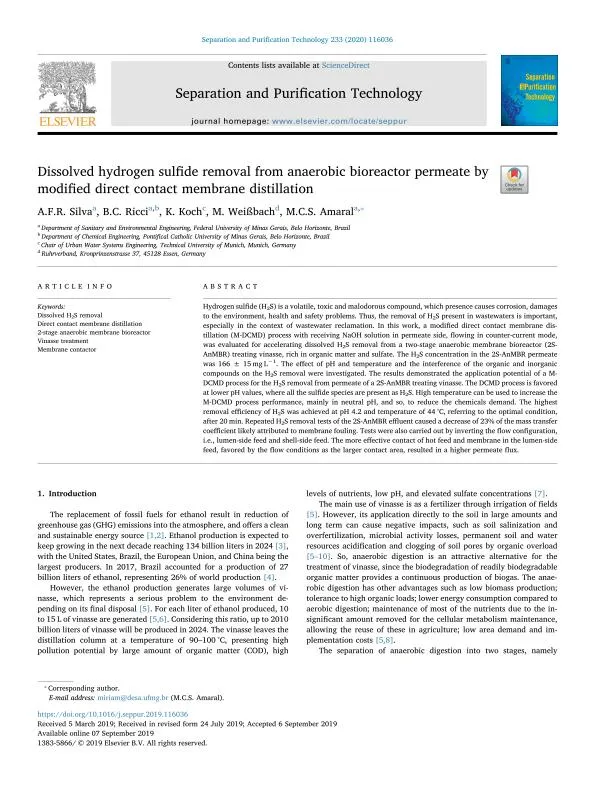Hydrogen sulfide (H2S) is a volatile, toxic and malodorous compound, which presence causes corrosion, damages to the environment, health and safety problems. Thus, the removal of H2S present in wastewaters is important, especially in the context of wastewater reclamation. In this work, a modified direct contact membrane distillation (M-DCMD) process with receiving NaOH solution in permeate side, flowing in counter-current mode, was evaluated for accelerating dissolved H2S removal from a two-stage anaerobic membrane bioreactor (2S-AnMBR) treating vinasse, rich in organic matter and sulfate. The H2S concentration in the 2S-AnMBR permeate was 166 ± 15 mg L−1. The effect of pH and temperature and the interference of the organic and inorganic compounds on the H2S removal were investigated. The results demonstrated the application potential of a M-DCMD process for the H 2 S removal from permeate of a 2S-AnMBR treating vinasse. The DCMD process is favored at lower pH values, where all the sulfide species are present as H2S. High temperature can be used to increase the M-DCMD process performance, mainly in neutral pH, and so, to reduce the chemicals demand. The highest removal efficiency of H2S was achieved at pH 4.2 and temperature of 44 °C, referring to the optimal condition, after 20 min. Repeated H2S removal tests of the 2S-AnMBR effluent caused a decrease of 23% of the mass transfer coefficient likely attributed to membrane fouling. Tests were also carried out by inverting the flow configuration, i.e., lumen-side feed and shell-side feed. The more effective contact of hot feed and membrane in the lumen-side feed, favored by the flow conditions as the larger contact area, resulted in a higher permeate flux.
